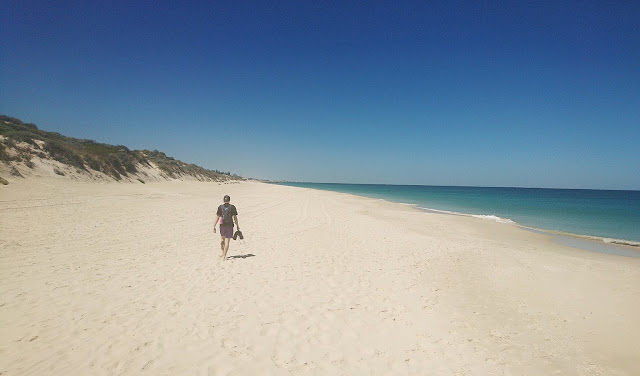Trespass on Devils Mountain
8th May 1945. The second Great War comes to an
end. Germany had just surrendered to the Allies and it would be only a matter
of months before Japan would follow suit. It was time for the world to piece
itself back together again.
Soldiers would return home, governments would reform and
economies would start to rebuild themselves. This would be no small task, particularly for Berlin, a city with 70% of its buildings in need of repair and
a third destroyed completely. Consequently midnight on the 8th May 1945 (aka
Stunde Null) saw the beginning of the biggest clean-up operation the city had
ever seen.
 |
Now Berlin had a lot of rubble to remove, and over the next
few years, huge trucks drove debris out of the city day after day. Meanwhile tensions between the allies and the USSR were growing. The world was facing a cold war, for which Berlin had become the focal point, and to
add fuel to the fire, East Berliners were issued a new state currency, a
decision the west did not take warmly to. And so, almost overnight on 24th
June 1948, West Berlin woke up to find all of the transport links out of the
city had been cut. No way in, no way out. The USSR sat back and admired their
handiwork, informing West Berlin that they would have to at least conform to
the new currency, otherwise they would remain trapped. They would be starved
out. This put West Berlin in a tight spot. Or at least it would have done had
the USSR not neglected one small glitch in their plan…
Planes.
Over the following year Allied forces sent over 200,000
planes carrying essential resources to West Berlin, with nearly 9,000 tonnes of
food, medicine and textiles landing every day. Thanks to Allied efforts almost
anything that West Berlin needed could be provided, so 11 months after the shutdown East Berlin conceded the Berlin Blockade had failed, removing their
troops from the roads and rails. But despite the failure of the blockade, it
did succeed at one thing…
Remember the rubble?
Most things leaving the city could be airlifted out as easily
as they were bought in, but the volume of rubble to remove was just too much for
the allies to handle. And so West Berlin was faced with a rather large problem.
How do we get rid of all this junk?
As it turns out, the answer to the problem was simple. Turn all of the rubble into a hill. 75 million m3 of debris in was dumped on top
of an old Nazi military technical college, forming what would today be known
as ‘Teufelsberg’ or ‘Devils Mountain’ -
a remarkable 120m tall wonder, towering over the city.
 |
| What a view from the top |
And it was at the top of Teufelsberg that I found myself on
a cold January morning. It’s a steep
trek to the top; trudging up a sandy path through Grunelwald Forest; the trees
that once surrounded the hill have now claimed Teufelsberg as their own. The
forest has done well to disguise the hills artificial origins; I spent most of
the walk to the top asking “do you think this is the right place? It just looks
so… hilly!” But upon reaching the top there is no mistaking where you are. A
plain stretches out ahead of you, weathered and desolate, a scene from any
dystopian video game. Whilst stray bricks and metal poles can be seen trying to
escape the ground in front of you, the city looms up behind, detached, a haze
along the skyline. The size is
unexpected. It would take perhaps an hour to walk around the top of the hill;
this feat of engineering is not to be underestimated. And looming out from
behind a cluster of trees is the crowning jewel of this mountain. The Listening
Tower.
 |
| The Teufelsberg Listening Tower |
Heading back to 1963, the Berlin Wall had been up for two
years and the US was itching to find out what the Soviets were up to on the
other side. Consequently, the NSA (US National Security Agency) constructed a
listening tower atop Teufelsberg, a perfect site for eavesdropping. During the
walls 28 years, conspiracies regarding the listening tower's true function began
to spread. A particular favourite of mine was the belief that below the tower
was a hidden submarine base. Over 200km from the sea. I’ll let you judge the
plausability of that one. Regardless of any sinister happenings, the US used the
listening tower until the fall of the wall in 1989. The early 90’s saw it bought out
by investors, hoping to convert the tower to hotels, or even a spy museum.
However these plans fell flat, with the site later bought by a private landlord
in 1996. Since then the listening tower has been a haven for graffiti artists,
many travelling across the world to make their mark on this infamous structure.
Unfortunately, as of April 2017, the owner began charging visitors to view this
majestic street art gallery, tightening security and stealing some of its wild
charm.
 Even more disappointingly for us, upon our visit in January
2018 we arrived to find the gates closed for the month. However walking around
the site boundaries and finding dozens of repaired entry points in the fence,
it felt as though the place was calling out to welcome trespassers. As we made
our way to the front gates we stumbled across two girls with the same idea, climbing
over the spiked gates. It looked like a respectable entry point…. until one got
stuck. Looking far from comfortable the girl eventually scrambled over, spikes
digging into her hands and stomach. Watching this painful attempt to access the
site, we figured we’d try and find an alternative route. But no sooner than
we’d turned our backs security were already there, escorting the girls off the
premises.
Even more disappointingly for us, upon our visit in January
2018 we arrived to find the gates closed for the month. However walking around
the site boundaries and finding dozens of repaired entry points in the fence,
it felt as though the place was calling out to welcome trespassers. As we made
our way to the front gates we stumbled across two girls with the same idea, climbing
over the spiked gates. It looked like a respectable entry point…. until one got
stuck. Looking far from comfortable the girl eventually scrambled over, spikes
digging into her hands and stomach. Watching this painful attempt to access the
site, we figured we’d try and find an alternative route. But no sooner than
we’d turned our backs security were already there, escorting the girls off the
premises.
No one was getting into the listening tower today.
 |
| A building we found in Grunelwald Forest. There were climbing hooks all over, if only I had bought climbing gear with me I might have more answers! |
Defeated, we trudged back. But walking through the
woods and down to the metro station I found myself preoccupied by all the
secrets I had yet to uncover. What was behind the listening tower gates? What
was the small building we found in the woods? What else was hidden throughout
the forest? Teufelsberg gave me a sense of the hidden secrets that exist everywhere
we go, a sense of how much we will never get to see, a sense of what could be
waiting. And whilst I may not have found out all of Teufelsbergs secrets just
yet, I am certainly going to try.
Teufelsberg, I’m coming back for you.
Happy travelling,
Vicky
TEUFELSBERG ESSENTIALS
How to get there:
Take the S3 or S9 train to Heerstraße, take a left out of
the station onto Teufelsseestraße, and walk down the road for about 5-10 mins,
until you see a wooded entrance on your right.
Cost:
Entry to Teufelsberg Listening Station was last advertised
at €8.



Comments
Post a Comment